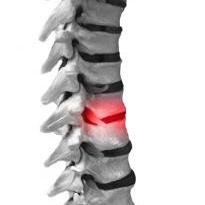Back pain does not have to be a fact of life. Lumbar dynamic stabilization offers new hope to patients with degenerative disc disease, providing a less invasive and more effective alternative to classic spinal fusion surgery.Every year, thousands of American patients seek treatment for back pain. There are many different ways that this chronic and painful condition can be handled, but for many Americans back pain has simply become a fact of life. For many, it is just too expensive to be treated. For the uninsured, it is almost impossible to afford. Even for those who can pay the insurance costs, traditional American back surgery was an unappealing option with relatively low success rates and long recovery times.
But today, spinal surgery has advanced far beyond those old practices. There is a new type of lumbar surgery that is being offered known as dynamic lumbar stabilization. This surgery has changed how the medical community thinks about spinal surgery. It has made the existing spinal surgery options more effective, and it has produced new lumbar surgery techniques and possibilities all its own. But one of the best aspects of dynamic lumbar stabilization is that world leaders in the developing spinal surgery field are available through Mexico medical travel, allowing patients who could not afford the surgery domestically to finally get relief overseas.
Mexico Medical Travel Doctors Lead The Way
As with many cutting edge techniques developed in the 21st century, some of the top lumbar surgery talent can be found in Mexico. Medical travel has long been desirable as an inexpensive alternative to care in the states, but health travelers are starting to discover that Mexico medical travel also brings access to surgeons who are, in many cases, more accustomed to the most modern techniques than some of their US-based counterparts.
For example, the Angeles Hospital Tijuana is the hospital of choice for Dr. Juan Dipp. Dr. Dipp is a world leader in dynamic lumbar stabilization, and has traveled around the globe helping teach other doctors how to perform the procedure. He is the lead surgeon and investigator for Interventional-Spine Inc’s Percudyn Dynamic Lumbar Stabilization System, for which he helped the global surgical protocol. Dr. Dipp has been responsible for creating all the information about the system; of the lumbar dynamic stabilization spinal surgeries performed in the past two years, fully half have been performed by Dr. Dipp.
Dr. Dipp and Percudyn are a good example of the breadth and sophistication of the continued growth of Mexico medical travel. A primary benefit to patients beyond the excellent quality of care available in Mexico is the fact that costs for Mexico medical travel remains only a small fraction of the cost in America.
Understanding Dynamic Lumbar Stabilization Spinal Surgery
For many patients, lumbar surgery can be quite mysterious. It is true that spinal surgery in general is one of the most difficult types of surgery to perform because the spine is such a complex structure and even a slight slip could have consequences. But there are doctors who have more than risen to the challenge, leading spinal surgery to new advancements and creating new equipment to make all procedures more advanced and effective than ever.
Lumbar dynamic surgery is one of these new advancements. Fusion spinal surgery has been a well-known technique within the lumbar surgery community for many years, but there was relatively little available beyond that. With the advent of lumbar dynamic stabilization spinal surgery, there was suddenly a way to dramatically improve the existing technique as well as to introduce new possibilities for therapy and healing.
Uses in Lumbar Surgery
There are three main ways to use lumbar dynamic stabilization spinal surgery. The first is to augment spinal fusion, where it will assist with the fusing of the grafts used on the spine. Lumbar dynamic stabilization spinal surgery has proven much more effective than the traditional system of metal rods that was once used to stabilize patients after spinal fusion lumbar surgery; the dynamic stabilization is a dramatic improvement over the more rigid traditional method.
Dynamic lumbar stabilization can also recreate a unique structure called the posterior tension band. This band is found at the very back of the spine, and is often removed during procedures such as spinal decompression. These procedures run a risk of destabilizing the spine, unless dynamic lumbar stabilization is used to replace the spine’s natural mechanisms and ensure proper function.
Finally, dynamic lumbar stabilization spinal surgery devices can help create healthy transition points between fused vertebra and non-fused vertebra. Often, it can be difficult for a fused and non-fused section to interact properly within the spine. The insertion of a flexible stabilization device during lumbar surgery helps spread forces across different levels of the spine, reducing pressure on any one point and promoting healthy healing.






